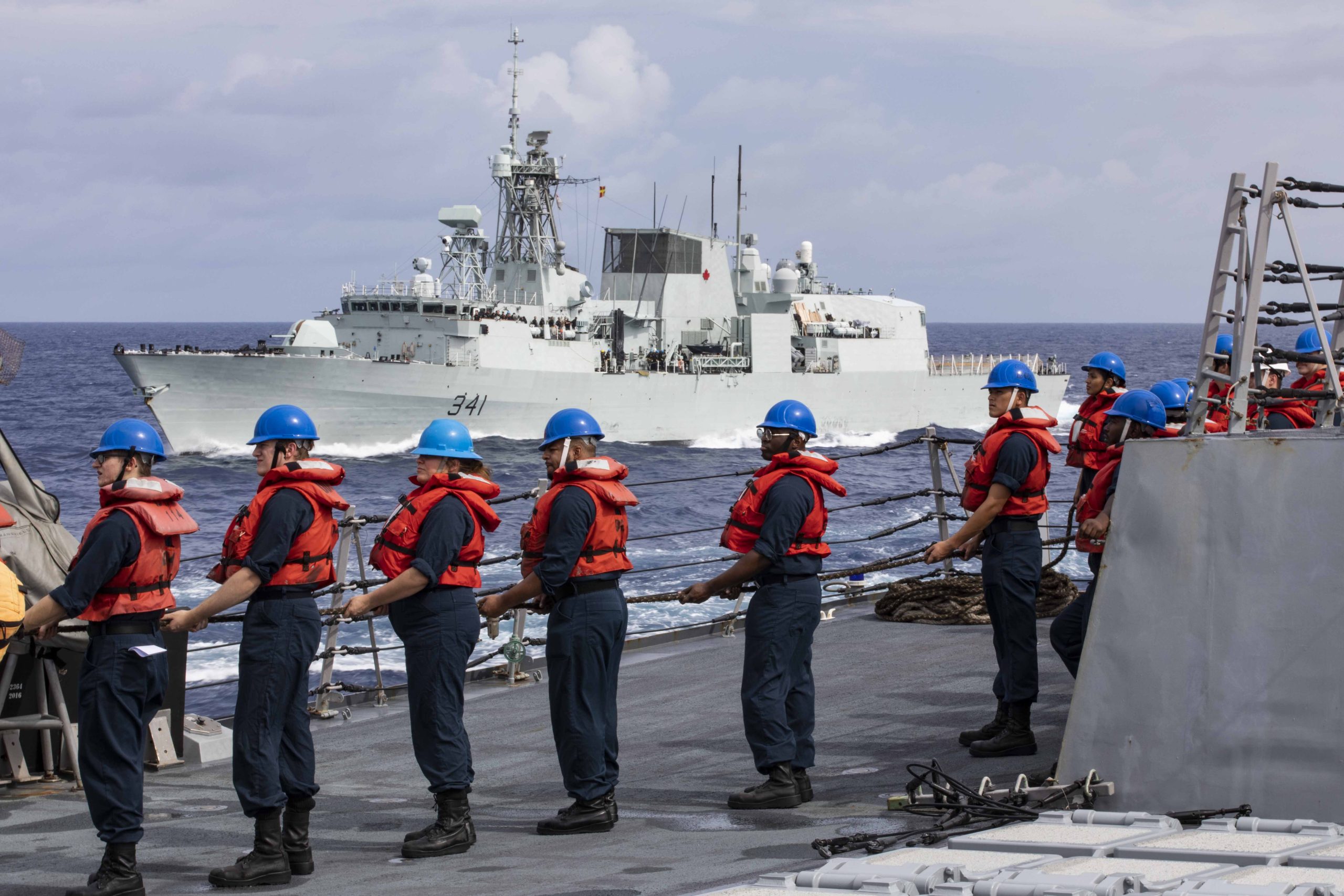
Canada is sending three frigates a year and a replenishment vessel into the Western Pacific as part of Ottawa’s new strategy, its top admiral said Friday.
Vice Adm. Angus Topshee acknowledged the “tyranny of distance” in making the commitment to the region.
“Canada is a Pacific nation,” he said.
“We’ve shifted the weight of our presence to the Pacific.”
Topshee added instead of the seven sailing days it takes for Canadian warships to reach operating stations in the Atlantic it takes three times as long to do that in the Pacific.
Speaking at a Center for Strategic and International Studies online event, Topshee cited the recent transit of the Taiwan Strait by its HMCS Ottawa (FFH-341) and USS Rafael Peralta (DDG-115) as an example of Canada’s commitment to the “rules-based international order” to ensure the free flow of trade through international waters.
While the two vessels were trailed by a number of Chinese ships through the strait, they transited without incident. A submarine-hunting helicopter from Ottawa, however, was intercepted by fighters Sunday that fired flares to drive off the Canadian aircraft flying in international airspace. It was the second such incident involving Canadian military helicopters and Chinese fighters in recent days.
Topshee called the incident “very dangerous” and was part of a pattern of Chinese aerial harassment that the United States brought to light several weeks ago.
“We don’t have a natural region of the world” to concentrate security interests and forces. “We’re surrounded by three oceans and the United States is to our south.”
Calling the U.S. “Canada’s closest ally,” he outlined a division of emphasis in the roles and missions of Canada’s armed forces.
The Canadian Army is concentrating on possible European land warfare as part of its NATO commitment. The Royal Canadian Air Force is tied closely to the United States in the North American Aerospace Defense Command. The Royal Canadian Navy looks to the Pacific.
“We think the Indo-Pacific is a maritime theater” for the movement of trade, potential source of energy and important minerals and its fisheries.
Before assuming Canada’s top naval post, Topshee served as commander of Maritime Forces Pacific. He pointed to Canada’s recently released policy paper on the Pacific as to the role of the navy in that region in places like the Taiwan Strait.
“Canada will also continue to work with partners to push back against any unilateral actions that threaten the status quo in the Taiwan Strait, as well as the East and South China Seas.”
In the discussion, Topshee cited Canada’s Harry de Wolf-class offshore patrol vessels as important assets in meeting new missions with island nations’ coast guards in protecting their fisheries and increasing maritime awareness in the Pacific. The class can also operate as icebreakers in the Far North.
On the Arctic, Topshee said, “We don’t anticipate a war in the Arctic or over the Arctic.” He ruled out the Northwest Passage as a viable sea route for now for ocean-to-ocean commerce. “The Northern Sea Route is more accessible,” but closer to Russia. He added that 22 percent of Russia’s gross domestic product comes from its mining of Arctic minerals and energy development. It also is a region where Moscow has built military facilities for its land and air forces and continued to expand its icebreaking fleet.
By contrast, “There are only 200,000 Canadians living” in the region, he said The largest locality has a population of 7,000. As for development, there is large iron ore mine operating and some diamond mining in the Canadian Arctic, he said.
For Canadian armed forces, Topshee said the “Arctic is an expeditionary theater.” He added its deep water port “is not like Singapore” where a ship can refuel and pick up provisions. “Everything we need in the north, we have to bring with us.”
Under those conditions, “basing is a challenge.” Topshee added the Canadian Navy is looking at dual-use facilities in the Arctic rather than building something for its own use.





